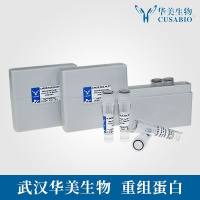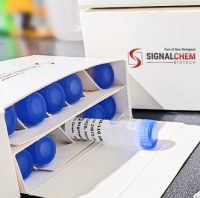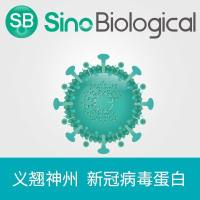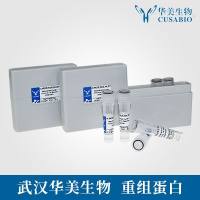Evaluating Modulators of “Regulator of G‐protein Signaling” (RGS) Proteins
互联网
- Abstract
- Table of Contents
- Materials
- Figures
- Literature Cited
Abstract
?Regulator of G?protein Signaling? (RGS) proteins constitute a class of intracellular signaling regulators that accelerate GTP hydrolysis by heterotrimeric G? subunits. In recent years, RGS proteins have emerged as potential drug targets for modulation by small molecules. Described in this unit are high?throughput screening procedures for identifying modulators of RGS protein?mediated GTPase acceleration (GAP activity), for assessment of RGS domain/G? interactions (most avid in vitro when G? is bound by aluminum tetrafluoride), and for validation of candidate GAP?modulatory molecules with the single?turnover GTP hydrolysis assay. Curr. Protoc. Pharmacol. 56:2.8.1?2.8.15. © 2012 by John Wiley & Sons, Inc.
Keywords: regulator of G?protein signaling (RGS) proteins; heterotrimeric G?protein ? subunits; Förster resonance energy transfer (FRET); single?turnover GTP hydrolysis; fluorescence polarization (FP)
Table of Contents
- Introduction
- Basic Protocol 1: Identifying Candidate RGS Protein Modulators with the Transcreener GDP Assay and a Rate‐Modified Gα Subunit
- Basic Protocol 2: Measuring Disruption of the RGS Domain/Gα Interaction by Förster Resonance Energy Transfer (FRET)
- Basic Protocol 3: Measuring Modulation of GAP Activity by Single‐Turnover GTP Hydrolysis
- Support Protocol 1: Purification of Gαi1, Gαi1(R178M/A326S), and Gαi1‐CFP
- Support Protocol 2: Purification of RGS4 and YFP‐RGS4
- Reagents and Solutions
- Commentary
- Literature Cited
- Figures
Materials
Basic Protocol 1: Identifying Candidate RGS Protein Modulators with the Transcreener GDP Assay and a Rate‐Modified Gα Subunit
Materials
Basic Protocol 2: Measuring Disruption of the RGS Domain/Gα Interaction by Förster Resonance Energy Transfer (FRET)
Materials
Basic Protocol 3: Measuring Modulation of GAP Activity by Single‐Turnover GTP Hydrolysis
Materials
Support Protocol 1: Purification of Gαi1, Gαi1(R178M/A326S), and Gαi1‐CFP
Materials
Support Protocol 2: Purification of RGS4 and YFP‐RGS4
Materials
|
Figures
-
Figure 2.8.1 Example of compound screen setup for Gαi1 and RGS4. (A ) Add 2 µl test compounds to rows A‐P/columns 3‐22 and add 2 µl DMSO control to rows A‐P/columns 1, 2, 23, and 24. (B ) Add 18 µl tracer control (T) and buffer control (B) to rows A‐C/column 1 and rows D‐F/column 1, respectively. Add 18 µl of Gαi1 alone control to all rows in column 23. Add 18 µl of Gαi1 + RGS4 mix to rows A‐P/columns 2‐22. View Image -
Figure 2.8.2 Gαi1 ‐CFP and YFP‐RGS4 emission spectra in GDP and AMF buffers. 500 nM Gαi1 ‐CFP and 900 nM YFP‐RGS4 were excited at 433 nm and emission spectra measured with a cuvette‐based PerkinElmer LS‐55 spectrometer. In the presence of AMF, RGS4 and Gαi1 bind with high affinity, leading to FRET between their fluorescent tags and an increased FRET ratio [(525‐nm emission)/(474‐nm emission)] compared to GDP buffer. View Image -
Figure 2.8.3 Example RGS protein/Gα FRET experimental setup. (A ) Each reaction mixture consists of 150 µl 3× RGS protein solution, 150 µl 3× Gαi1 , and compound or DMSO to the desired test concentration. The total reaction volume is 450 µl. (B ) The reaction mixtures, in both AMF and GDP buffers, are distributed in triplicate across a 96‐well plate. The shading gradient represents varying concentrations of test compound. View Image -
Figure 2.8.4 Inhibition of Gαi1 /RGS4 interaction by the cysteine‐reactive compound CCG‐4986. A previously identified compound, CCG‐4986, (Roman et al., ) covalently modifies surface cysteines on RGS4, preventing association with Gαi1 (Kimple et al., ). The FRET method allows determination of an IC50 for RGS protein inhibition. View Image -
Figure 2.8.5 RGS4 is allosterically modulated by phospholipids in single‐turnover hydrolysis assays. Phosphatidyl inositol triphosphate (PIP3 ) modulates RGS4 activity though an allosteric “B” site, described previously (Ishii and Kurachi, ; Tu and Wilkie, ). In single‐turnover assays, inclusion of phospholipid vesicles containing PIP3 , but not phosphatidyl choline (PC) only, inhibits RGS4 GAP activity. Similar reversal of RGS4‐mediated GTP hydrolysis acceleration would be expected for an inhibitory compound. View Image
Videos
Literature Cited
| Berman, D.M., Wilkie, T.M., and Gilman, A.G. 1996. GAIP and RGS4 are GTPase‐activating proteins for the Gi subfamily of G protein alpha subunits. Cell 86:445‐452. | |
| Blazer, L.L., Roman, D.L., Chung, A., Larsen, M.J., Greedy, B.M., Husbands, S.M., and Neubig, R.R. 2010. Reversible, allosteric small‐molecule inhibitors of regulator of G protein signaling proteins. Mol. Pharmacol. 78:524‐533. | |
| Ishii, M. and Kurachi, Y. 2004. Assays of RGS protein modulation by phosphatidylinositides and calmodulin. Methods Enzymol. 389:105‐118. | |
| Kimple, A.J., Willard, F.S., Giguère, P.M., Johnston, C.A., Mocanu, V., and Siderovski, D.P. 2007. The RGS protein inhibitor CCG‐4986 is a covalent modifier of the RGS4 Gα‐interaction face. Biochim. Biophys. Acta 1774:1213‐1220. | |
| Kimple, R.J., De Vries, L., Tronchere, H., Behe, C.I., Morris, R. A., Gist Farquhar, M., and Siderovski, D.P. 2001. RGS12 and RGS14 GoLoco motifs are G alpha(i) interaction sites with guanine nucleotide dissociation inhibitor activity. J. Biol. Chem. 276:29275‐29281. | |
| Oldham, W.M. and Hamm, H.E. 2008. Heterotrimeric G protein activation by G‐protein‐coupled receptors. Nat. Rev. Mol. Cell. Biol. 9:60‐71. | |
| Popov, S., Yu, K., Kozasa, T., and Wilkie, T.M. 1997. The regulators of G protein signaling (RGS) domains of RGS4, RGS10, and GAIP retain GTPase activating protein activity in vitro. Proc. Natl. Acad. Sci. U.S.A. 94:7216‐7220. | |
| Roman, D.L., Talbot, J.N., Roof, R.A., Sunahara, R.K., Traynor, J.R., and Neubig, R.R. 2007. Identification of small‐molecule inhibitors of RGS4 using a high‐throughput flow cytometry protein interaction assay. Mol. Pharmacol. 71:169‐175. | |
| Tu, Y. and Wilkie, T.M. 2004. Allosteric regulation of GAP activity by phospholipids in regulators of G‐protein signaling. Methods Enzymol. 389:89‐105. | |
| Willard, F.S., Kimple, R.J., Kimple, A.J., Johnston, C.A., and Siderovski, D.P. 2004. Fluorescence‐based assays for RGS box function. Methods Enzymol. 389:56‐71. | |
| Zhang, J.H., Chung, T.D., and Oldenburg, K.R. 1999. A simple statistical parameter for use in evaluation and validation of high throughput screening assays. J. Biomol. Screen. 4:67‐73. | |
| Zielinski, T., Kimple, A.J., Hutsell, S.Q., Koeff, M.D., Siderovski, D.P., and Lowery, R.G. 2009. Two Gα(i1) rate‐modifying mutations act in concert to allow receptor‐independent, steady‐state measurements of RGS protein activity. J. Biomol. Screen. 14:1195‐1206. | |
| Key Reference | |
| Kimple, A.J., Bosch, D.E., Giguère, P.M., and Siderovski, D.P. 2011. Regulators of G‐protein signaling and their Gα substrates: Promises and challenges in their use as drug discovery targets. Pharmacol. Rev. 63:728‐749. | |
| A recent review of the RGS proteins focused on the rationale for their consideration as valuable drug discovery targets and current efforts to identify chemical probes that modify RGS protein GAP activity. |









